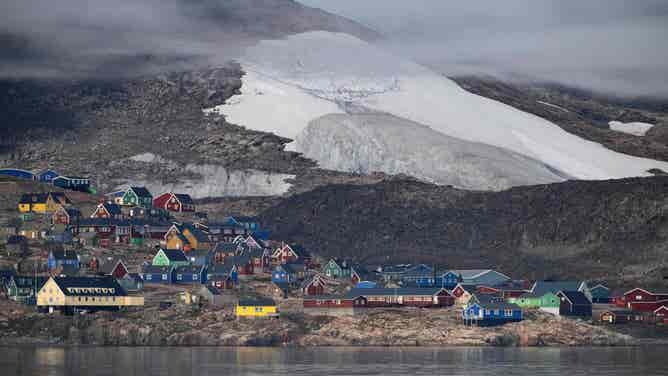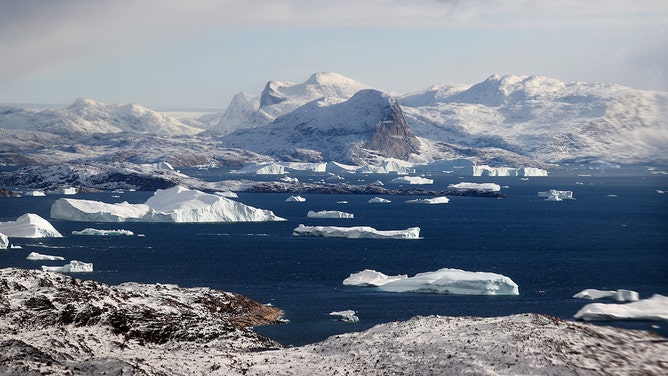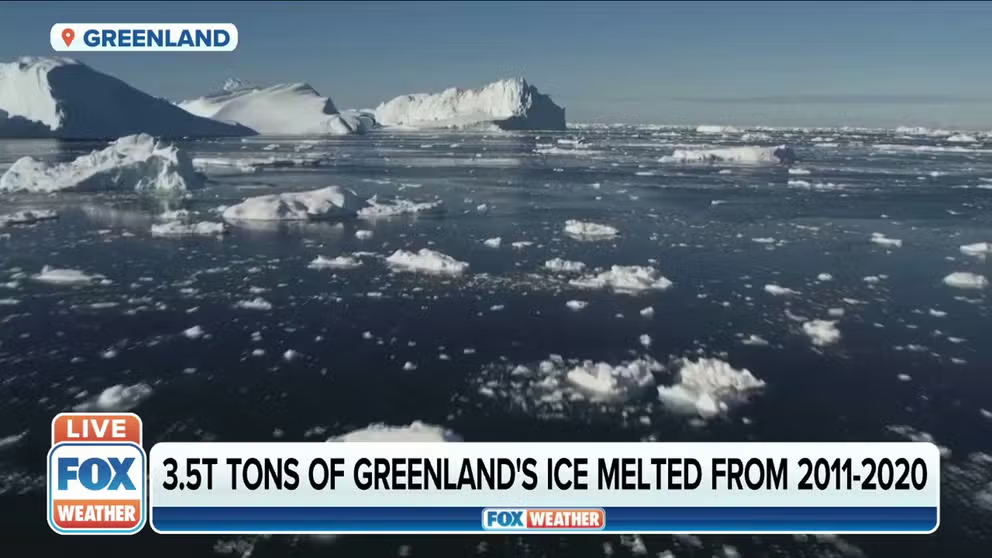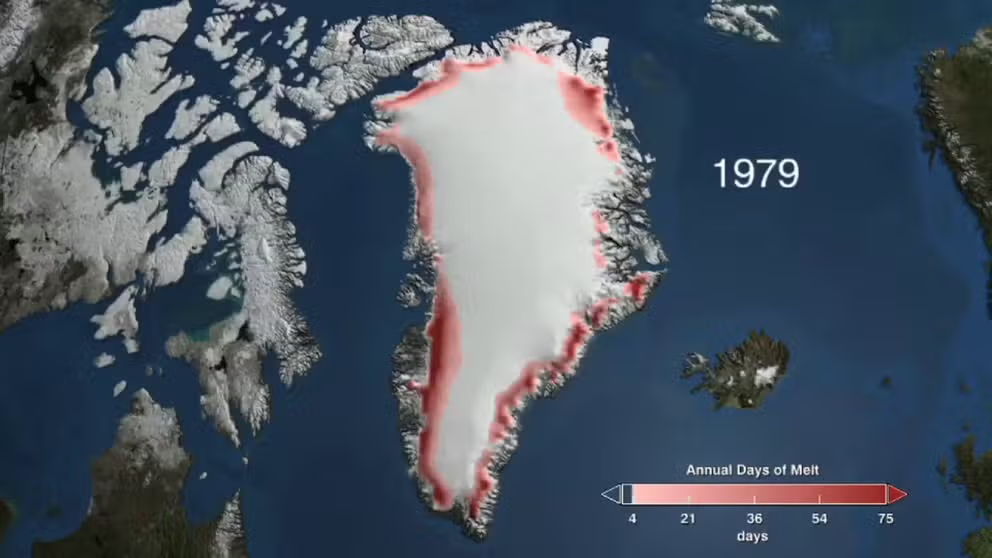Greenland's ice sheet is melting, turning country green again for first time in thousands of years
Could Greenland possibly turn green for the first time in tens of thousands of years? Research shows the vegetation covering the island doubled in the past 30 years.
New study found that 3.5 trillion tons of Greenland's ice melted from 2011-2020
Research published in the journal Nature Communications on Nov. 1 says 3.5 trillion tons of Greenland's ice sheet melted from 2011 to 2020, which would be enough to flood all of New York City in 14,700 feet of water.
The question, "Why is Iceland green and Greenland icy?" may be a thing of the past, according to new research. Greenland is, in fact, turning green.
"Besides the vastly decreased ice cover (by 11,083 square miles), we find a doubling in total areal coverage of vegetation and a quadrupling in wetlands coverage," wrote authors of the research published Tuesday in the journal Nature.
All that change has been just in the past 30 years. Scientists call it "shrubification."
ANCIENT ‘ZOMBIE’ VIRUSES MAY THREATEN HUMANS DUE TO MELTING PERMAFROST

File: This picture shows the village of Ittoqqortoormiit in Scoresby Fjord, on August 15, 2023.
(OLIVIER MORIN/AFP / Getty Images)
Climate change is warming the Arctic
The driving force is that the Arctic, especially Greenland, has been warming twice as much as the rest of the world since the 1970s, the authors pointed out. Air temperatures (annual average) rose by 4.89 degrees from the period from 1979-2000 to 2007-2012.
"More extremes of temperature and precipitation are expected in the near future as Greenland’s climate resilience decreases and non-linear land-climate system feedbacks develop, including soil development and vegetation change, land surface albedo (reflection) change, and permafrost degradation," said the study.
More of the Sun’s energy is absorbed by the darker rock, soil and water in the form of heat. That energy used to be reflected back to space by the light ice and snow cover.
GRAVITY-WEAKENING MELTING ICE IN GREENLAND TO RAISE GLOBAL SEA LEVELS BY NEARLY A FOOT, STUDY SAYS

The images show areas of change from the 1980s to the 2010s in color at four different areas of Greenland.
(Michael Grimes et al / FOX Weather)
In terms of feedback, this relationship changes the energy balance on the surface and microclimatology. For example:
- Ice sheets and glaciers melt.
- The flowing water erodes rock, which eventually becomes soil, and permafrost melts, which frees up more soil for more plants.
- Arctic soils release greenhouse gases that are trapped in the permafrost.
- Microbes become active with the warmth, break down organic matter and fertilize the soil.
The study points to an increase in days above 42.8 degrees as the tipping point.
Satellite view of Greenland's shrinking ice cap over 30 years
NASA satellite images show the ice extent and the areas melting over the past 30 years to demonstrate Greenland's melting ice cap.
Greenland was once very green
Researchers took samples of permafrost deep in the Earth to find that Greenland was almost ice-free for periods between 2.6 million years ago to 11,700 years ago. Ice was at 10% of its current volume.
ARCTIC WARMING 4 TIMES FASTER THAN THE REST OF THE WORLD

Drainage system with lake on the surface of the ice sheet. The brown sediment on the ice is created by the rapid melting of the ice. Landscape of the Greenland ice sheet near Kangerlussuaq.
(Martin Zwick/REDA&CO/Universal Images / Getty Images)
Why is Greenland icy and not green?
About 80% of the largest island in the world is covered by glaciers. Only 10%-14% of Iceland is covered, according to IcelandDiscover.is. The site says that a thousand years ago, when Vikings landed on Greenland, it was warmer and probably greener than it is today.
But, credit goes to explorer Erik the Red, who found Greenland after Iceland kicked him out after a murderous spree.
"Erik the Red wanted more people to settle there, so thought if it had a pleasant-sounding name, people would be more likely to move there," explains the site.

File: Icebergs are seen from NASA's Oceans Melting Greenland (OMG) research aircraft on September 7, 2021, near Upernavik, Greenland.
(Mario Tama / Getty Images)
Vikings did settle on the island. The site points to a few unfortunate events that led them to depart. First, a volcanic eruption dropped Greenland's temperature in the 14th century. Then, demand for the big export, walrus ivory, dropped in Europe thanks to the Plague. And Africa's elephant ivory became the new craze as trade routes opened.
Icelandic folklore claims that a man from Norway arrived on the island. His daughter drowned on the trip, and then his livestock died over the winter. Depressed, he climbed a mountain and saw a fjord full of icebergs. He went back to Norway and told of his Iceland adventure, and the name stuck, according to Discover Iceland.

